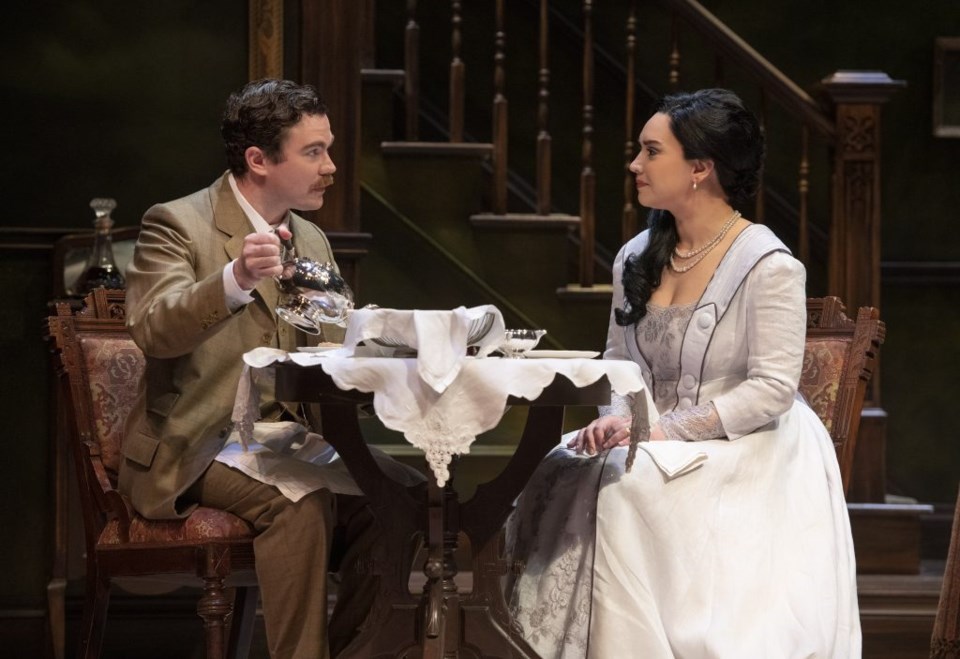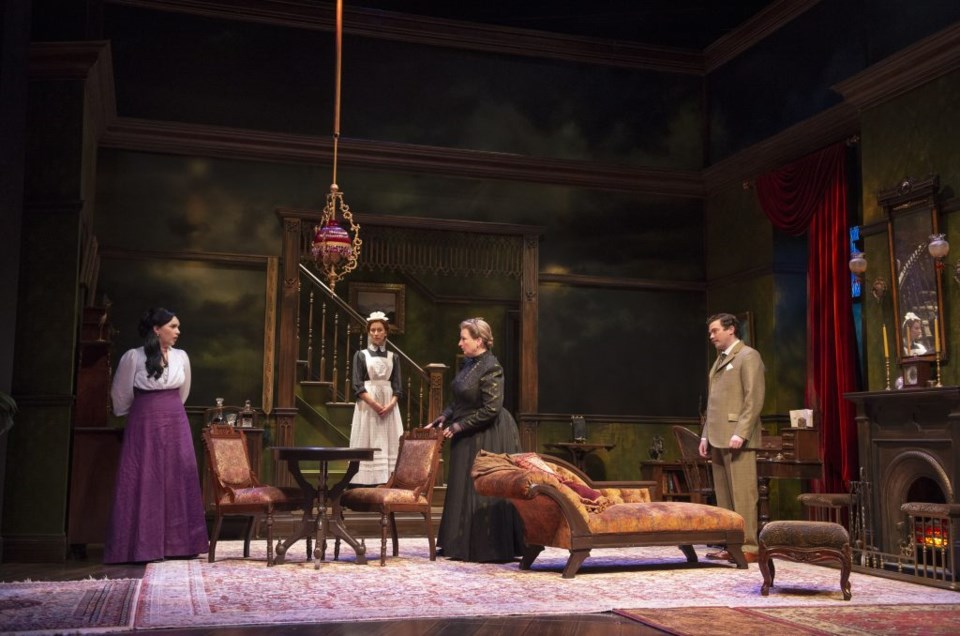
The term gaslight, meaning to make a person question their own reality, is thought to have originated with the 1944 film of the same name, based on the play Angel Street, written by Patrick Hamilton and sometimes performed under the title Gaslight.
The psychological thriller centred on Paula, played by Ingrid Bergman, who is shut away from the outside world by her husband Gregory, played by Charles Boyer. Gregory begins a lengthy campaign to make his wife question her own sanity. The house features gaslights that periodically dim, which add to Paula’s confusion and fear. They also stand as a symbol of Gregory’s wicked campaign.
The term was used infrequently over the decades following the film’s release, but became part of the vernacular in 2020 when American country band the (Dixie) Chicks released their album Gaslighter, featuring the song of the same name. In the wake of the #MeToo movement, gaslighting found new relevance as a way to describe malicious efforts of men to keep women ‘in their place.’
That makes the timing perfect for the Shaw Festival’s presentation of Gaslight this summer. Johnna Wright and Patty Jamieson have adapted Hamilton’s original play for the Royal George Theatre into a feminist tour-de-force, directed by Kelli Fox.
Wright and Jamieson have trimmed the cast down to four, eliminating the friendly, overbearing and suspicious Detective Rough and his fellow policemen from Hamilton’s original script. Julie Lumsden and André Morin appear as Bella and Jack Manningham, the names from the original Hamilton play. The other two characters are servants Elizabeth (Kate Hennig) and Nancy (Julia Course).
Gaslight takes place entirely on an interior set, the Manningham sitting room, where Bella is an unwitting prisoner in her own home. Set and costume designer Judith Bowen’s choice of the small, static setting, Gothic in decor, is key in establishing Bella’s claustrophobia, which increases as the story progresses.
The play begins innocently enough. Bella calls upon Elizabeth to help set up tea service for the arrival of Jack. Mrs. Manningham seems bubbly, effervescent and happy for her husband’s impending arrival, and Morin plays Jack in this scene with convincing charm.
But quickly Jack shifts into his manipulative ways, driving the joy from Bella’s heart. The Shaw audience reacts appropriately as Lumsden becomes deflated, a woman convinced that her ‘hysterics’ justify her husband’s seeming concern for her well-being, ‘for her own good.’
Jack points out missing portraits and jewels, making Bella believe that she is losing her mind. As well, the gaslights that hang from the ceiling and line a wall periodically dim and flicker, supposedly only seen by Bella herself.
Though it may be clear to the audience, Bella is unaware she is being manipulated by Jack. At times Morin’s Jack comes across as merely sly and calculating, but at others he is convincingly mean-spirited and angry, using bluster and force to keep Bella at bay. Jack also spins Bella’s mother’s history of mental illness and her subsequent institutionalization as proof that there is something wrong with his wife’s mental state.
True to the Victorian London times in which the play is set, when women were seeking suffrage and greater access to education, employment and property, Jack prescribes rest and isolation for his wife’s recovery. There was a pervasive view in that era that women were susceptible to mental weakness, a view that was helped along by Freud’s theories on mental health. Rest was the most common solution to hysteria long before Valium took its place.
By the end of Act 1, Bella, unable to trust in her own thoughts, is driven to suicidal thoughts by Jack’s malicious campaign.
But in the second act, with the realization that every time she gets better, something happens to keep her down, Lumsden’s Bella undergoes a transformation. As she puts the pieces together she realizes that there is something wrong in the house, where prior to her becoming Mrs. Manningham, a robbery and murder had taken place.
She gains confidence and begins to turn the tables on a snivelling Jack, reclaiming her identity and her strength along the way.
Saying more would give too much away. Suffice to say, though, that Wright and Jamieson have reimagined Hamilton’s original work as a story about Bella’s strength and resourcefulness. And the audience reacted during the Friday matinee performance accordingly.
Though the Victorian setting of Shaw’s production may at times seem quaint and anachronistic, Wright and Jamieson’s adaptation, combined with expert performances by Lumsden and Morin, make Gaslight very relevant to modern times.
Gaslight is onstage at the Royal George Theatre until Oct. 8. For tickets visit shawfest.com.
